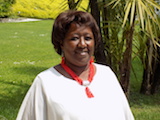Tobias Alfvén, Agnes Binagwaho, and Måns Nilsson call for multisectoral collaboration to become the “new normal”
Since the sustainable development goals (SDGs) were introduced in September 2015, we have read the phrase “we cannot continue with business as usual” many times. It is now common to hear calls to transform the way we work by taking an integrated approach and pursue multisectoral partnerships. However, it is still rare for proponents to explain how collaboration between different sectors can happen or what such collaboration looks like in practice.
It is therefore inspiring to read the article by Shyama Kuruvilla and colleagues that explores how health and development programmes have navigated the challenges of multisectoral collaboration. [1] Their work is based on The BMJ series of articles describing the experiences of multisectoral work in different countries and settings. [2] The synthesis of findings and proposed multisectoral model can be a valuable starting point in creating a recipe to promote and successfully work multisectorally.
The articles in the series describe a form of multisectoral collaboration in which organisations from different sectors come together to achieve a shared outcome. It’s notable that all of the “shared outcomes” within the case studies are health focused, ranging from young people’s mental health to immunisation services.
Broader view
Clearly it’s not too difficult for health sector professionals to buy into health goals, but if we broaden the view of the SDG agenda it’s important to recognise that other sectors work towards different goals and outcomes. These goals may feel distant to the everyday work of health professionals, such as improved traffic flow in cities, lower environmental impact from food production, creating peaceful and inclusive communities, or increasing the use of clean energy. The real trick here would be to develop strategies, policies, and practices that promote such sectoral goals together with health outcomes. This is what the SDGs are about; a coherent and integrated approach to resolve some of the world’s major development challenges across environmental, social, economic, and institutional domains.
To make sense of this, and to foster multisectoral collaboration, we need a structured way of identifying interactions between sectors. When we achieve progress on one goal, how does this affect the conditions for achieving progress on another? An SDG interactions framework has been developed to help policy makers and planners to think these issues through. [3] Mapping the interactions between sectoral objectives requires, in itself, a multistakeholder process and provides the necessary starting point to carry out the “define” stage in Kuruvilla and colleagues’ model. [1] In this stage, respective goals and issues are framed and structured across sectors, and their respective roles and priorities are determined.
A recent BMJ article looked at child health as an example of how an assessment of interactions between SDGs can be used to guide and align multisectoral action. [4] With such an understanding in place, collaborative partnerships can be created, building on where our goals as health professionals are aided by, or enable, the goals of, for example, the city planning agency for infrastructure development or the environmental protection agency. Moreover, conflicts between different goals can also be identified in this way.
Can multisectoral collaboration be institutionalised and scaled up as the “new normal” way of doing things? An example of institutional multisectorial collaboration exists in Rwanda, where the members of the social cluster from each ministry (health, education, gender and family promotion, youth, sport and culture, local government and decentralisation, and infrastructure) meet at least every two months to review all new policies and strategies to build consensus before they are presented to the prime minister and the cabinet.
Can the proposed framework by Kuruvilla and colleagues be used to create a recipe that will avoid creating a special platform for collaboration every time a multisectorial approach is needed? To make this approach work, and avoid only ad-hoc successes, it should include the mapping of interactions and structuring collaboration as part of the institutional procedures of decision making—not only national but also at local, district, and regional levels and wherever the planning, resourcing, and management of healthcare systems take place.
 Tobias Alfvén is associate professor in global child health at the Department of Public Health Sciences at Karolinska Institutet and specialist in paediatrics at Sachs’ children and youth hospital in Stockholm, Sweden. Tobias is also the vice chair of the Swedish Society of Medicine and a SIGHT fellow at the Royal Swedish Academy of Sciences.
Tobias Alfvén is associate professor in global child health at the Department of Public Health Sciences at Karolinska Institutet and specialist in paediatrics at Sachs’ children and youth hospital in Stockholm, Sweden. Tobias is also the vice chair of the Swedish Society of Medicine and a SIGHT fellow at the Royal Swedish Academy of Sciences.
 Agnes Binagwaho is the vice chancellor of the University of Global Health Equity in Rwanda. She served in high level government positions in Rwanda, including being the minister of health in from 2011 to 2016. Agnes is a senior lecturer in the department of global health and social medicine at Harvard Medical School and an adjunct clinical professor of paediatrics at the Geisel School of Medicine at Dartmouth. She is a member of the American National Academy of medicine and a fellow of the African Academy of Sciences.
Agnes Binagwaho is the vice chancellor of the University of Global Health Equity in Rwanda. She served in high level government positions in Rwanda, including being the minister of health in from 2011 to 2016. Agnes is a senior lecturer in the department of global health and social medicine at Harvard Medical School and an adjunct clinical professor of paediatrics at the Geisel School of Medicine at Dartmouth. She is a member of the American National Academy of medicine and a fellow of the African Academy of Sciences.
 Måns Nilsson is executive director of Stockholm Environmental Institute and part time professor of the practice of environmental strategies and policy analysis at the Royal Institute of Technology in Stockholm, Sweden. Måns is also a member of the Scientific Council for Sustainable Development to the Government of Sweden.
Måns Nilsson is executive director of Stockholm Environmental Institute and part time professor of the practice of environmental strategies and policy analysis at the Royal Institute of Technology in Stockholm, Sweden. Måns is also a member of the Scientific Council for Sustainable Development to the Government of Sweden.
Competing interests: We have read and understood BMJ policy on declaration of interests and have no relevant interests to declare.
Provenance and peer review: Commissioned; not externally peer reviewed.
References:
1 Kuruvilla S, Hinton R, Boerma T, et al. Business not as usual: how multisectoral collaboration can promote transformative change for health and sustainable development. BMJ 2018;363:k4771. doi:10.1136/bmj.k4771
2 Making Multisectoral Collaboration Work. www.bmj.com/multisectoral-collaboration
3 Nilsson M, Griggs D, Visbeck M. Map the interactions between sustainable development goals. Nature 2016;534:320–2. PubMed doi:10.1038/534320a
4 Blomstedt Y, Bhutta ZA, Dahlstrand J, et al. Partnerships for child health: capitalising on links between the sustainable development goals. BMJ 2018;360:k125. PubMed doi:10.1136/bmj.k125
